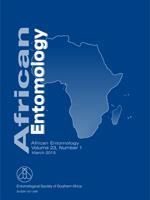Eighteen sesame varieties were tested in the field for their responses to major insect pests with or without insecticide application. Insect pest density was higher in the unsprayed plots than the sprayed plots, except Myzus persicae whose density was significantly higher in the sprayed plots. Lower insect density was recorded on Yobe-Chambamba, while higher pest density was recorded on Domu, in late season. Yobe-Chambamba and Eva were not attacked by M. persicae. Leaf and capsule damage were significantly lower (2 % each) on Yobe-Chambamba.Amongthe varieties,Yobe-Chambambacarried the least pest population intensity, while highest pest density was recorded on Domu, NCRIBEN-01M, Yobe-gadaka, 530-6-1, Cross-95, E-8, PB-Til, Ciano-16 and Cameroun white. Lambda-cyhalothrin application significantly reduced pest density in the early season but not capsule damage or any of the plant characteristics measured. The use of lambda-cyhalothrin may not be necessary for the control of insect pests on sesame in the experimental area.
How to translate text using browser tools
1 March 2015
Susceptibility of Sesame (Sesamum indicum L.) to Major Field Insect Pests as Influenced by Insecticide Application in a Sub-Humid Environment
A.O. Akinyemi,
O.O.R. Pitan,
A.A. Osipitan,
M.A. Adebisi
ACCESS THE FULL ARTICLE
It is not available for individual sale.
This article is only available to subscribers.
It is not available for individual sale.
It is not available for individual sale.

African Entomology
Vol. 23 • No. 1
March 2015
Vol. 23 • No. 1
March 2015
Antigastra catalaunalis
insecticide
Myzus persicae
phytochemicals
resistance
Sesame
Zonocerus variegatus




